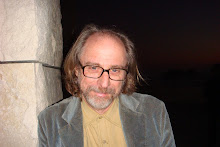O. Ivar Lovaas died just over a week ago at a hospital in Lancaster. He was 83 years old. I did not know him personally, although I spoke with him on a couple of occasions and attended a lecture of his at Cal-ABA on self-stimulatory behavior. To say that Lovaas was an icon is an understatement. Although he was not the originator of the methods that eventually became so associated with him that for many years they were called “Lovaas therapy,” his contributions as a researcher and tireless promoter were huge.
In reality, the methods he used to treat children with autism and others were developed by his mentors at the University of Washington—Don Baer, Todd Risley, Montrose Wolf, and others—methods that eventually came to be called applied behavior analysis. Lovaas was a graduate student at the University of Washington who had been trained in classical psychoanalytic methods, and although he became perhaps the most well-known advocate for behavioral methods for children with autism, he never swayed completely from his psychoanalytic roots. In fact he was probably the only behavioral researcher who gave Rorschach tests to his subjects.
Lovaas was a controversial figure, revered by many and reviled by many others. In his early work, he occasionally used aversive procedures, which he defended adamantly although he eventually abandoned them in favor of non-aversive procedures. He claimed for some time that the only way to achieve the formidable results he achieved was to be trained only by him or those authorized by him, thereby giving a proprietary flair to his methods. In true scientific fashion, many academicians looked askance at anything proprietary, capitalism and science being the awkward bedfellows they can sometimes be.
Those who knew him and were close to him have told me that he was often sweet and charming, but definitely genuine. You knew where you stood with him. In my view, his responses to those who criticized him occasionally lacked sensitivity; he did joke at times that his Norwegian farmer roots led him to say things simply and directly. There can be no doubt that without his contributions, many thousands of children would not have received the help they needed.
In the last few years, he had been diagnosed with Alzheimer’s, and he did not lecture or appear in large public forums. He eventually died of an infection following hip surgery. He was a giant and we will miss him. Most importantly, those of us in the field of helping children with autism owe him a deep debt of gratitude.
Monday, August 9, 2010
Subscribe to:
Posts (Atom)
